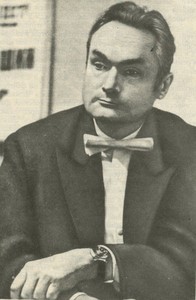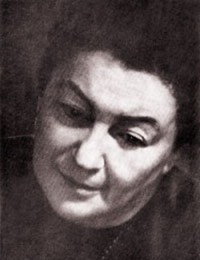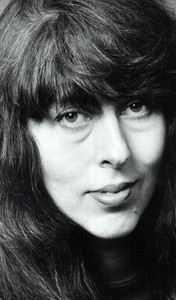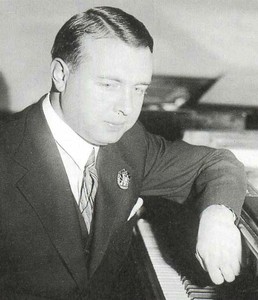
Rudolf Richardovich Kerer (Rudolf Kehrer) |
Rudolph Kehrer

Artistic destinies in our time are often similar to one another – at least at first. But the creative biography of Rudolf Richardovich Kerer bears little resemblance to the rest. Suffice it to say that until the age of thirty-eight (!) he remained in complete obscurity as a concert player; they knew about him only at the Tashkent Conservatory, where he taught. But one fine day – we will talk about him ahead – his name became known to almost everyone interested in music in our country. Or such a fact. Every performer is known to have breaks in practice when the lid of the instrument remains closed for some time. Kerer also had such a break. It only lasted, neither more nor less than thirteen years …
- Piano music in the Ozon online store →
Rudolf Richardovich Kerer was born in Tbilisi. His father was a piano tuner or, as he was called, a musical master. He tried to keep abreast of all the interesting events in the concert life of the city; introduced to music and his son. Kerer remembers the performances of E. Petri, A. Borovsky, remembers other famous guest performers who came to Tbilisi in those years.
Erna Karlovna Krause became his first piano teacher. “Almost all of Erna Karlovna’s students were distinguished by enviable technique,” says Kehrer. “Fast, strong and precise play was encouraged in the class. Soon, however, I switched to a new teacher, Anna Ivanovna Tulashvili, and everything around me immediately changed. Anna Ivanovna was an inspired and poetic artist, lessons with her were held in an atmosphere of festive elation … “Kerer studied with Tulashvili for several years – first in the” group of gifted children “at the Tbilisi Conservatory, then at the conservatory itself. And then the war broke everything. “By the will of circumstances, I ended up far from Tbilisi,” continues Kerer. “Our family, like many other German families in those years, had to settle in Central Asia, not far from Tashkent. There were no musicians next to me, and it was rather difficult with the instrument, so piano lessons somehow stopped by themselves. I entered the Chimkent Pedagogical Institute at the Faculty of Physics and Mathematics. After graduating from it, he went to work at school – he taught mathematics in high school. This went on for several years. To be precise – until 1954. And then I decided to try my luck (after all, musical “nostalgia” did not cease to torment me) – to pass the entrance exams to the Tashkent Conservatory. And he was accepted into the third year.
He was enrolled in the piano class of teacher 3. Sh. Tamarkina, whom Kerer never ceases to remember with deep respect and sympathy (“an exceptionally fine musician, she mastered the display on the instrument superbly …”). He also learned a lot from meetings with V. I. Slonim (“a rare erudite … with him I came to understand the laws of musical expressiveness, previously I only intuitively guessed about their existence”).
Both educators helped Kerer bridge the gaps in his special education; thanks to Tamarkina and Slonim, he not only successfully graduated from the conservatory, but was also left there to teach. They, mentors and friends of the young pianist, advised him to test his strength at the All-Union Competition of Performing Musicians announced in 1961.
“Having decided to go to Moscow, I did not deceive myself with special hopes,” recalls Kerer. Probably, this psychological attitude, not burdensome either by excessive anxiety or soul-draining excitement, helped me then. Subsequently, I often thought about the fact that young musicians playing at competitions are sometimes let down by their preliminary focus on one or another award. It fetters, makes one weighed down by the burden of responsibility, enslaves emotionally: the game loses its lightness, naturalness, ease … In 1961 I did not think about any prizes – and I performed successfully. Well, as for the first place and the title of laureate, this surprise was all the more joyful for me … “
The surprise of Kerer’s victory was not only for him. The 38-year-old musician, almost unknown to anyone, whose participation in the competition, by the way, required special permission (the age limit of the contestants was limited, according to the rules, to 32 years), with his sensational success overturned all the previously expressed forecasts, crossed out all conjectures and assumptions. “In just a few days, Rudolf Kerer won a noisy popularity,” the music press noted. “The very first of his Moscow concerts were sold out, in an atmosphere of joyful success. Kerer’s speeches were broadcast on radio and television. The press responded very sympathetically to his debuts. He became the subject of heated discussions among both professionals and amateurs who managed to classify him among the largest Soviet pianists … ” (Rabinovich D. Rudolf Kerer // Musical Life. 1961. No. 6. P. 6.).
How did the guest from Tashkent impress the sophisticated metropolitan audience? The freedom and impartiality of his stage statements, the scale of his ideas, the original nature of music-making. He did not represent any of the well-known pianistic schools – neither Moscow nor Leningrad; he did not “represent” anyone at all, but was only himself. His virtuosity was also impressive. She, perhaps, lacked external gloss, but one felt in her both elemental strength, and courage, and mighty scope. Kerer delighted with his performance of such difficult works as Liszt’s “Mephisto Waltz” and F-minor (“Transcendental”) Etude, Glazunov’s “Theme and Variations” and Prokofiev’s First Concerto. But more than anything else – the overture to “Tannhäuser” by Wagner – Liszt; Moscow criticism responded to his interpretation of this thing as a miracle of miracles.
Thus, there were quite enough professional reasons for winning the first place from Kerer. Yet the real reason for his triumph was something else.
Kehrer had a fuller, richer, more complex life experience than those who competed with him, and this was clearly reflected in his game. The age of the pianist, the sharp twists of fate not only did not prevent him from competing with brilliant artistic youth, but, perhaps, they helped in some way. “Music,” said Bruno Walter, “is always the “conductor of the individuality” of the one who performs it: just as, he drew an analogy, “how metal is a conductor of heat” (Performing art of foreign countries. – M., 1962. Issue I. C. 71.). From the music that sounded in the interpretation of Kehrer, from his artistic individuality, there was a breath of something not quite usual for the competitive stage. The listeners, as well as the members of the jury, saw in front of them not a debutant who had just left behind a cloudless period of apprenticeship, but a mature, established artist. In his game – serious, sometimes painted in harsh and dramatic tones – one guessed what is called psychological overtones … This is what attracted universal sympathy to Kerer.
Time has passed. The exciting discoveries and sensations of the 1961 competition were left behind. Having advanced to the forefront of Soviet pianism, Kerer has long been occupying a worthy place among his fellow concert artists. They got acquainted with his work comprehensively and in detail – without the hype, which most often accompanies surprises. We met both in many cities of the USSR and abroad – in the GDR, Poland, Czechoslovakia, Bulgaria, Romania, Japan. More or less strengths of his stage manner were also studied. What are they? What is an artist today?
First of all, it is necessary to say about him as a master of large form in the performing arts; as an artist whose talent expresses itself most confidently in monumental musical canvases. Kerer usually needs vast sound spaces where he can gradually and gradually build up dynamic tension, mark out the reliefs of musical action with a large stroke, sharply outline culminations; his stage works are perceived better if viewed as if moving away from them, from a certain distance. It is no coincidence that among his interpreting successes are such opuses as Brahms’ First Piano Concerto, Beethoven’s Fifth, Tchaikovsky’s First, Shostakovich’s First, Rachmaninov’s Second, sonata cycles by Prokofiev, Khachaturian, Sviridov.
Works of large forms include almost all the concert players in their repertoire. They are, however, not for everyone. For someone, it happens that only a string of fragments comes out, a kaleidoscope of more or less brightly flashing sound moments … This never happens with Kerer. Music seems to be seized by an iron hoop from him: no matter what he plays – Bach’s D-minor concerto or Mozart’s A-minor sonata, Schumann’s “Symphonic etudes” or Shostakovich’s preludes and fugues – everywhere in his performance order, internal discipline, strict organization triumph material. Once a teacher of mathematics, he has not lost his taste for logic, structural patterns, and clear construction in music. Such is the warehouse of his creative thinking, such are his artistic attitudes.
According to most critics, Kehrer achieves the greatest success in the interpretation of Beethoven. Indeed, the works of this author occupy one of the central places on the pianist’s posters. The very structure of Beethoven’s music – its courageous and strong-willed character, imperative tone, strong emotional contrasts – is in tune with Kerer’s artistic personality; he has long felt a vocation for this music, he found his true performing role in it. In other happy moments in his game, one can feel a complete and organic fusion with Beethoven’s artistic thought – that spiritual unity with the author, that creative “symbiosis” that K. S. Stanislavsky defined with his famous “I am”: “I exist, I live , I feel and think the same with the role ” (Stanislavsky K.S. The work of an actor on himself // Collected works – M., 1954. T. 2. Part 1. S. 203.). Among the most interesting “roles” of Kehrer’s Beethoven repertoire are the Seventeenth and Eighteenth Sonatas, the Pathetique, the Aurora, the Fifth Concerto and, of course, the Appassionata. (As you know, the pianist once starred in the film Appassionata, making his interpretation of this work available to an audience of millions.) It is noteworthy that Beethoven’s creations are in harmony not only with the personality traits of Kerer, a man and an artist, but also with the peculiarities of his pianism. Solid and definite (not without a share of “impact”) sound production, fresco style of performance – all this helps the artist to achieve high artistic persuasiveness in the “Pathetique”, and in the “Appassionata”, and in many other Beethoven’s piano opuses.
There is also a composer who almost always succeeds with Kerer—Sergei Prokofiev. A composer who is close to him in many ways: with his lyricism, restrained and laconic, with a penchant for instrumental toccato, for a rather dry and brilliant game. Moreover, Prokofiev is close to Kerer with almost all of his arsenal of expressive means: “the pressure of stubborn metrical forms”, “simplicity and squareness of rhythm”, “an obsession with relentless, rectangular musical images”, “materiality” of texture, “the inertia of steadily growing clear figurations” (S. E. Feinberg) (Feinberg S. E. Sergei Prokofiev: Characteristics of Style // Pianoism as an Art. 2nd ed. – M., 1969. P. 134, 138, 550.). It is no coincidence that one could see the young Prokofiev at the origins of Kerer’s artistic triumphs – the First Piano Concerto. Among the acknowledged achievements of the pianist are Prokofiev’s Second, Third and Seventh Sonatas, Delusions, prelude in C major, the famous march from the opera The Love for Three Oranges.
Kerer often plays Chopin. There are works by Scriabin and Debussy in his programs. Perhaps these are the most controversial sections of his repertoire. With the pianist’s undoubted success as an interpreter – Chopin’s Second Sonata, Scriabin’s Third Sonata… – it is these authors who also reveal some shady sides in his art. It is here, in Chopin’s elegant waltzes and preludes, in Scriabin’s fragile miniatures, in Debussy’s elegant lyrics, that one notices that Kerer’s playing sometimes lacks refinement, that in some places it is harsh. And that it would not be bad to see in it a more skillful elaboration of details, a more refined colorful and coloristic nuance. Probably, every pianist, even the most eminent, could, if desired, name some pieces that are not for “his” piano; Kerr is no exception.
It happens that the pianist’s interpretations lack poetry – in the sense that it was understood and felt by romantic composers. We venture to make a debatable judgment. The creativity of musicians-performers, and perhaps composers, like the creativity of writers, knows both its “poets” and its “prose writers”. (Would it occur to someone in the world of writers to argue which of these genres is “better” and which is “worse”? No, of course.) The first type is known and studied quite fully, we think about the second less often; and if, for example, the concept of “piano poet” sounds quite traditional, then this cannot be said about “prose writers of the piano”. Meanwhile, among them there are many interesting masters – serious, intelligent, spiritually meaningful. Sometimes, however, some of them would like to wish to define the limits of their repertoire more precisely and more strictly, giving preference to some works, leaving aside others …
Among colleagues, Kerer is known not only as a concert performer. Since 1961 he has been teaching at the Moscow Conservatory. Among his students are the winner of the IV Tchaikovsky Competition, the famous Brazilian artist A. Moreira-Lima, the Czech pianist Bozhena Steinerova, the winner of the VIII Tchaikovsky Competition Irina Plotnikova, and a number of other young Soviet and foreign performers. “I am convinced that if a musician has achieved something in his profession, he needs to be taught,” says Kerer. “Just as we are obliged to raise a succession of masters of painting, theater, cinema — all those whom we call “artists” . And it’s not just a matter of moral duty. When you are engaged in pedagogy, you feel how your eyes open to many things … “
At the same time, something upsets Kerer the teacher today. According to him, it upsets the too obvious practicality and prudence of today’s artistic youth. Excessively tenacious business acumen. And not only at the Moscow Conservatory, where he works, but also in other music universities in the country, where he has to visit. “You look at other young pianists and you see that they think not so much about their studies as about their careers. And they are looking for not just teachers, but influential guardians, patrons who could take care of their further advancement, would help, as they say, to get on their feet.
Of course, young people should worry about their future. This is completely natural, I understand everything perfectly. And yet… As a musician, I can’t help but regret seeing that the accents are not where I think they should be. I can’t help but be upset that the priorities in life and work are reversed. Maybe I’m wrong…”
He is right, of course, and he knows it very well. He simply does not want, apparently, for someone to reproach him for such an old man’s grouchiness, for such an ordinary and trivial grumbling at the “present” youth.
* * *
In the 1986/87 and 1987/88 seasons, several new titles appeared in Kerer’s programs – Bach’s Partita in B flat major and Suite in A minor, Liszt’s Obermann Valley and Funeral Procession, Grieg’s Piano Concerto, some of Rachmaninoff’s pieces . He does not hide the fact that at his age it is more and more difficult to learn new things, to bring them to the public. But – it is necessary, according to him. It is absolutely necessary not to get stuck in one place, not to dequalify in a creative way; to feel the same current concert performer. It is necessary, in short, both professionally and purely psychologically. And the second is no less important than the first.
At the same time, Kerer is also engaged in “restoration” work – he repeats something from the repertoire of past years, reintroduces it into his concert life. “Sometimes it is very interesting to observe how attitudes towards previous interpretations change. Consequently, how do you change yourself. I am convinced that there are works in the world’s musical literature that simply demand to be returned to from time to time, works that need to be periodically updated and rethought. They are so rich in their inner content, so multifacetedthat at every stage of one’s life’s journey one will surely find in them something previously unnoticed, undiscovered, missed…” In 1987, Kerer resumed Liszt’s B minor sonata in his repertoire, played for over two decades.
At the same time, Kerer is now trying not to linger for a long time on one thing – say, on the works of one and the same author, no matter how close and dear he may be. “I have noticed that changing musical styles, different composing styles,” he says, “helps maintain the emotional tone in the work. And this is extremely important. When behind so many years of hard work, so many concert performances, the most important thing is not to lose the taste for playing the piano. And here the alternation of contrasting, diverse musical impressions personally helps me a lot – it gives some kind of inner renewal, refreshes feelings, relieves fatigue.
For every artist, there comes a time, adds Rudolf Rikhardovich, when he begins to understand that there are a lot of works that he will never learn and play on stage. It’s just not in time … It’s sad, of course, but there’s nothing to be done. I think with regret, for example, how muchI didn’t play in his life the works of Schubert, Brahms, Scriabin, and other great composers. The better you want to do what you are doing today.
They say that experts (especially colleagues) can sometimes make mistakes in their assessments and opinions; general public in ultimately never wrong. “Each individual listener is sometimes unable to understand anything,” noted Vladimir Horowitz, “but when they get together, they understand!” For about three decades, Kerer’s art has enjoyed the attention of listeners who see him as a great, honest, non-standard-minded musician. And they not mistaken…
G. Tsypin, 1990





